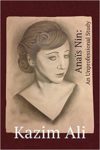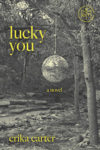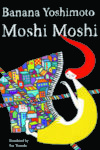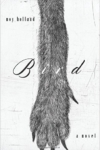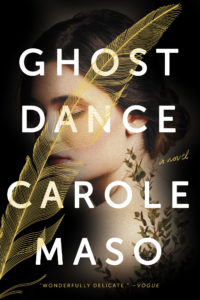
[Counterpoint Press; 2019]
Carole Maso has never tried to avoid the label, “experimental writer.” Indeed, in interviews and essays she has often advocated on behalf of experimental fiction, lamenting the lack of critical attention it receives and excoriating big publishers for their commercial fixations at the expense of the literary. In her essay, “Notes of a Lyric Artist Working in Prose,” she critiques the conditions that prevail in contemporary writing:
Together, many novelists, now commodity makers, have agreed on a recognizable reality, which they are all too happy to impart as if it were true. Filled with hackneyed ways of perceiving, cliched, old sensibilities, they and the publishing houses create traditions which have gradually been locked into place. They take for granted: the line, the paragraph, the chapter, the story, the storyteller, character.
Here, Maso presumably gives us not only a general description of the ambitions to which experimental fiction ought to aspire (or, more precisely, of those it ought to reject), but also an explicit signal of what we might expect to find in her own work. And indeed, we do find in Maso’s novels and stories an exploration of the possibilities of unorthodox structural and stylistic devices beyond those associated with conventional narratives. Still, it can’t really be said that Maso’s fiction ultimately abandons either “story” or “character.” While her novels are sufficiently different from each other that their formal qualities can be described only in reference to their specific effect in the work at hand, each of them could be said to elicit these effects as an alternative means — alternative to the “traditions” that most literary fiction continues to unreflectively reproduce — of presenting characters, specifically the narrator-protagonists whose efforts to relate their experiences (and sometimes to imagine the experiences of others) serve as a substitute for “narrative” in the conventional sense, but each certainly does finally offer a story encompassing, in most cases, the character’s whole life.
Some of the novels, such as The Art Lover (1990), employ a collage-like method, in this case exemplified by a dual-stranded sequence of events (the narrator’s own past and the version of it presented in the novel she is writing) and supplemented by a variety of graphic and pictorial elements. Defiance (1998), perhaps Maso’s most well-known novel, also uses the collage method, except here the fragmentation arises from the narrator’s fragmented consciousness, as she records her experiences in a journal (while awaiting execution for double murder, no less). Of the two, The Art Lover seems the most purely motivated simply by a desire to experiment with form, while the extremity of form in Defiance seems determined by the extremity of the subject and situation, all working not really to solve a mystery — why did the narrator murder her young students? — but to depict a woman exploring the peripheries of her own psychic trauma. Something like this is also featured in Ava (1993), although in this novel the situation is even more extreme: literally from her deathbed, suffering the final stage of cancer and in a coma, the protagonist cycles through her life experiences in a series of mostly brief images and recalled moments.
These novels admirably maintain an alternative practice outside the conventions “locked into place” that have turned writers into “commodity makers,” but that is not to say they are inaccessible for readers open to unorthodox strategies that nevertheless lead to fulfilling familiar goals grounding fiction in character (as well as narrative in the broadest sense). Indeed, novels like The Art Lover and Defiance surely do at the least eventually cohere as stories of women’s lives of the sort feminist criticism especially helps us in reading, and Defiance in particular seems a deliberate attempt to shock through its content, its fragmented form actually serving to create a kind of traditional dramatic tension through ellipsis, understatement, and delay. Even Ava is not quite the radical experiment in discontinuous, even random, expression it might at first appear to be. Once we have adjusted to the situation and sampled enough of the at times near-musical flow of language as it cycles through Ava’s not-quite-consciousness, we can more readily accept the novel’s apparent formal and discursive disorder as a radical invocation of the stream-of-consciousness strategy, taken, perhaps, to its plausible limit, but surely a recognizable method with an established history.
Maso’s most thoroughly adventurous work may be the short story collection, Aureole (1996). In her preface to the book, Maso says she is attempting to discover “ways in language to express the extreme, the fleeting, the fugitive states that hover at the outermost boundaries of speech.” In this case, the “fugitive” state explored is sexual desire, the ineffability of which is represented in the “sexual energy” Maso has attempted to infuse into her sentences. Few of the stories are explicit (at least in their language, which instead is metaphorical and suggestive), and in fact description of the particulars of a sexual encounter is not at all the Aureole’s, ambition but rather the invocation of the exigencies of desire in both the stylistic and formal features of the stories. Thus they are shaped less by concerns of narrative than of tracking the unpredictable, shifting movements of desire as might be registered in language.
If Aureole most directly forwards an approach attempting to fuse style and form (in a way that again most approximates music), this sort of motive seems to inform most of Maso’s fiction, including the novels, which, if not so removed from conventional practices as to be forbidding, nevertheless succeed in exploring “ways of perceiving” — both experience and fiction itself as literary art — that are not hackneyed and that resist being themselves perceived as commodities. That Maso was a writer likely to be engaged in such a project was clear enough in her debut novel, Ghost Dance (1986), now offered in a reprint edition by Counterpoint Press. Perhaps the first challenge posed to the reader in this novel is to appropriately perceive its protagonist: We are initially presented with the image of a woman “standing under the great clock in Grand Central Station,” who is, the narrator tells us, “waiting for me.” The woman is revealed as the narrator’s mother, and the first scene introduces us to this character whose enigmatic absence (except in the narrator’s memories of her) paradoxically makes her the novel’s most vivid presence. Even so, she retains the element of mystery established by the narrator’s account in this first, extended memory of a woman on the edge of madness — although, as we discover throughout the novel, whether her madness is the source of her gift — she is a renowned poet, as it turns out — or whether the gift itself impels her disordered habits is never made definitively clear.
The narrator, Vanessa, does not seem quite sure about this herself, although what follows our first acquaintance with her mother, Christine is essentially Vanessa’s attempt to reckon with the loss of the mother, as well as the overwhelming effect Christine has had on her, which arises as much from the mother’s persistent absences as her direct acts of parenting. This Vanessa does obliquely, however, through a kaleidoscope of memories (of her father, brother, and grandparents as well as Christine) and fragmented narratives about her own experiences separate from her mother. But Vanessa appears to be in a state of mental displacement, and so we cannot be entirely confident in her reliability as narrator. She seems unable to accept the fact of her mother’s death, suggesting to us that Christine has simply disappeared (as has Vanessa’s father). If Ghost Dance portrays Vanessa finally as capable of coming to terms with her family history, this novel could be taken as Vanessa’s progress toward acceptance of reality, but this means that much of what she tells us, her rendering of events and characters, must be subject to doubt. Thus the more startling episodes from her own past and present, from her affair with a mentally disturbed fellow college student who ultimately commits suicide, to a sexual encounter with Christine’s lesbian lover, Sabine, to a relationship with a giant man (“an enormous man, a man so large he might blot out the sun”) named Jack each must be doubted as a literal representation of “real” events.
Perhaps the same is true of Vanessa’s account of her grandparents, one of whom becomes deeply immersed in Native American spirituality, while another exiles himself to Armenia, although we might think her hold on family history would be more secure than on her own present experiences. None of this makes such interludes less effective in evoking Vanessa’s troubled state of mind, however. And to the extent that we might read Ghost Dance as the revelation of her confused consciousness, we would probably conclude that it is Vanessa’s story that is the novel’s primary focus of concern. In a sense this evocation of a consciousness in extremis governs the novel’s formal structure: fragmented, prone to repetition and revision, scattered in time and place, but ultimately holding together in its task of suggesting a more nebulous reality beneath the “recognizable reality” that form in conventional fiction reliably summons. We could say that latter reality does finally come into more apparent view by the end of the novel, when the actual circumstances of Christine’s death are revealed. Vanessa relates Christine’s death in an automobile accident, as well as its immediate aftermath, straightforwardly enough at this point, but the accident would seem to be the central trauma animating the novel, to which Vanessa’s fractured narrative figuratively bears witness, circling around it but finally not able to evade its heavy gravity.
Still, if Vanessa’s internal conflict motivates the novel’s formal structure, her hesitations and evasions inevitably work to make Christine an even more enigmatic figure, and thus arguably make her character its most memorable feature. Although Christine is a dynamic character in her own way — part free-spirited artist, part incipient madwoman, the two halves perhaps indivisible — she is also the first of what will become a recognizable kind of character in Maso’s fiction, an unruly woman of sorts, a trait she shares with Ava Klein and Defiance’s Bernadette O’Brien. The title of Defiance, of course, captures the spirit both of these women characters, whose behavior defies the constrictions of what is considered to be proper behavior for women, and of the work of Carole Maso herself. Maso’s fiction does consistently defy those “hackneyed” conventions that in most contemporary fiction are assumed to be “locked into place.” In employing non-hackneyed stylistic and formal strategies, Maso creates distinctive characters not usually to be found in other fiction, even other fiction written by women. Neither Maso nor her characters are afraid to transgress presumed boundaries.
Maso’s most recent novel was Mother and Child, an atypical exercise in surreal whimsy, published in 2012. By then, it had been 14 years since Defiance, although Maso had published three works of nonfiction in the interim. Presumably through much of this time (and since) she was working on the reportedly mammoth Bay of Angels, excerpts of which have appeared in various journals. These excerpts, as well as Maso’s own descriptions, suggest the novel will draw on the sort of collage and juxtaposition we find in the previous work (and it appears to involve Ava Klein), so it will indeed be interesting to see how Maso is able to realize her iconoclastic ambitions in meeting the large-scale demands of the meganovel.
Daniel Green is a literary critic whose essays and reviews have appeared in a variety of publications, both online and in print. His new book, Beyond the Blurb, has just been published by Cow Eye Press and his website can be found at: http://noggs.typepad.com.
This post may contain affiliate links.




